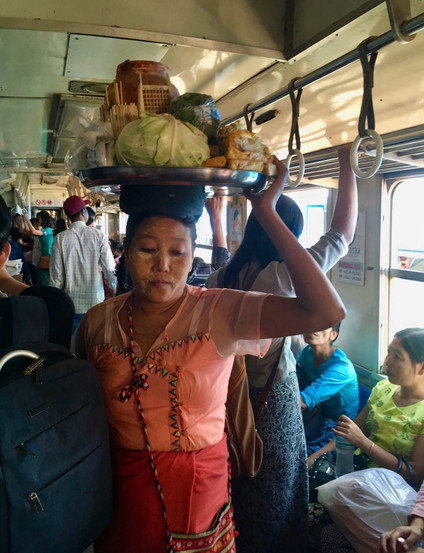Faces of Yangon: diversity against the odds (2018)
- Margarite Clarey
- Mar 5, 2018
- 2 min read
Updated: May 18
It’s 8pm and we are lugging groceries back to our hotel in downtown Yangon. It’s been a long, hot day and we waddle in silence.
My hands are too full to hold out a map, so instead I follow the golden tip of the Sule Pagoda. Smack in the middle of down-town Yangon, it occupies a space between roads, politics, religion and ideology.
As we approach its northern tip we pass a large mosque, its doors wide-open. Making our way clockwise around the pagoda’s perimeters we see the City Hall, Immanuel Baptist Church, Yangon Court and Maha Bandula Park – where an obelisk commemorates Burmese independence from British India.
This pocket of downtown Yangon tells a story of a multi-cultural and interfaith nation with a divisive past and present. It was the backdrop of the bloody 8888 uprising and the saffron revolution two decades later. It is where Aung San Suu Kyi became a national icon for democracy and where Monks were chased from the streets by gunfire as they peacefully protested fuel subsidies in 2007.
Since its transition to democracy in 2008, Myanmar rarely makes world news. When it does, its screen time is reserved to Aung Sun Suu Kyi – or inter-communal violence.
As we meander into the Sule night market I notice groups of children playing together around their parents stalls – some adorned with bindis, others with traditional Thankakha on their cheeks.
Tonight, like on my first trip to Yangon in February, I am surprised to see veiled women and bearded men chatting with others in Indian-style sarees, or traditional Burmese longyis. On Yangon’s streets, the lives of Burma’s Muslims, Hindus, Jains and Buddhists remain interwoven. Unlike the tumultuous border regions, people maintain some level of inter-communal unity.
Maintaining this communal cohesion is difficult. The information era hit Myanmar at a pace so rapid that propaganda and manipulated images spread like wild-fire online, and are indiscernible to most. In 2006, a sim-card cost around $3,000 and the Yangon School of Political Science – like others that implant critical thinking – did not exist. In Myanmar, fake news goes a long way in shaping public perception of already vilified groups, with gut-wrenching consequences.
As we leave the market and the shadow of the Sule Pagoda, I’m optimistic that the children playing happily and innocently on the street represent the future of the nation; for united they stand a better chance of resisting the politics of divide and rule.










Comments